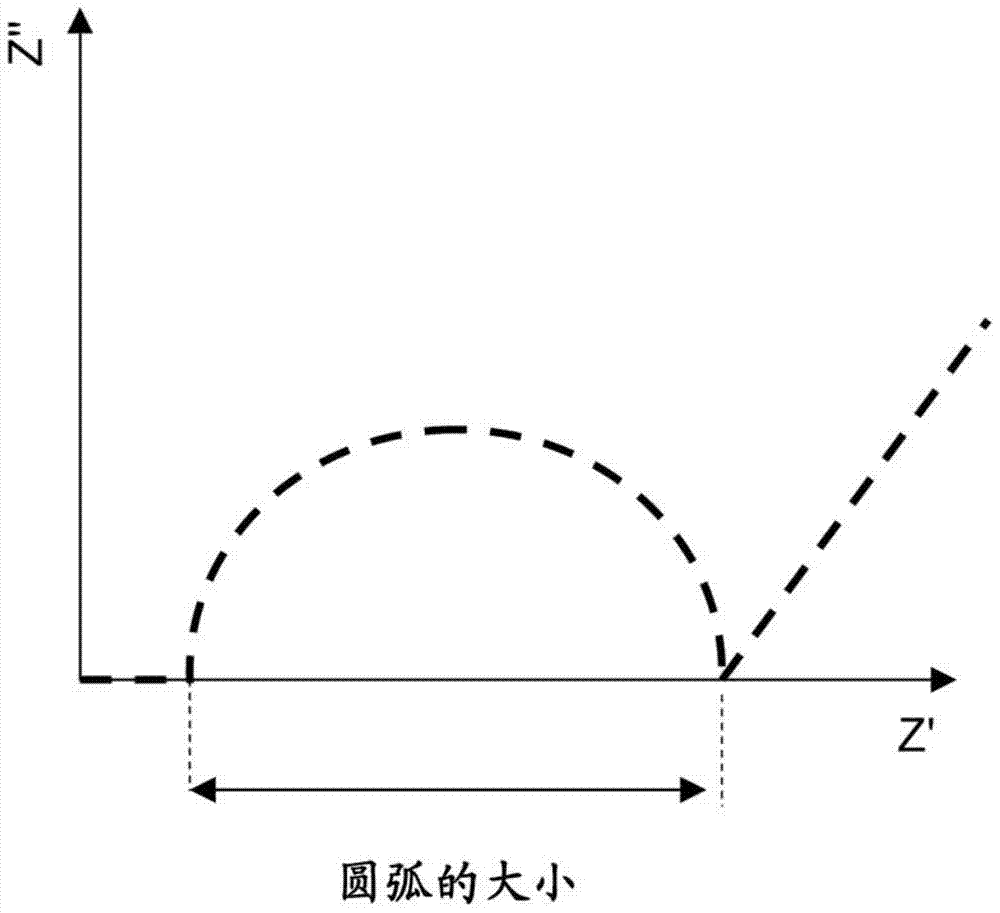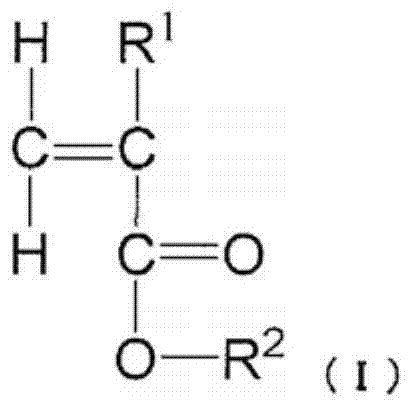Slurry composition for lithium-ion secondary cell negative electrode
A secondary battery, lithium ion technology, applied in secondary batteries, battery electrodes, lithium batteries, etc., can solve the problems of inability to uniformly disperse, deterioration of battery characteristics such as cycle characteristics, and aggregation of alloy active materials, and achieve high-temperature cycling. Excellent properties, suppressing volume expansion, and improving dispersibility
- Summary
- Abstract
- Description
- Claims
- Application Information
AI Technical Summary
Problems solved by technology
Method used
Image
Examples
Embodiment 1
[0314] [1] Manufacture of water-soluble polymer (B1)
[0315] Add 25 parts of methacrylic acid (ethylenically unsaturated carboxylic acid monomer), 2,2,2-trifluoroethyl methacrylate (fluorine-containing (meth)acrylate monomer) into a 5MPa pressure-resistant container with a stirrer ) 10 parts, ethyl acrylate ((meth)acrylate monomer) 58.5 parts, 2-acrylamide-2-methylpropanesulfonic acid (ethylenically unsaturated sulfonic acid monomer) 5 parts, polyoxyalkylene Alkenyl ether ammonium sulfate (reactive surfactant monomer, manufactured by Kao, trade name "Latemul PD-104") 1.5 parts, tert-dodecyl mercaptan (chain transfer agent) 0.2 parts, ion-exchanged water 150 parts and 0.5 parts of potassium persulfate (polymerization initiator) were stirred sufficiently, and then heated to 50° C. to initiate polymerization. When the polymerization conversion ratio reached 99.0% or more, cooling was performed to terminate the reaction, and a mixture containing the water-dispersed polymer (B1...
Embodiment 2
[0337] In the manufacture of the slurry composition for negative electrodes in step [3], the addition amount of the water-soluble polymer (B1) was set to 0.3 parts, and the addition amount of the water-soluble polymer (B2) was set to 0.2 parts, and the Except for the slurry composition for negative electrodes, it carried out similarly to Example 1, and manufactured the negative electrode and the lithium ion secondary battery. The results are shown in Table 1.
Embodiment 3
[0339] In the manufacture of the slurry composition for negative electrodes in step [3], the addition amount of the water-soluble polymer (B1) was set to 1.08 parts, and the addition amount of the water-soluble polymer (B2) was set to 0.72 parts, and the Except for the slurry composition for negative electrodes, it carried out similarly to Example 1, and manufactured the negative electrode and the lithium ion secondary battery. The results are shown in Table 1.
PUM
| Property | Measurement | Unit |
|---|---|---|
| Viscosity | aaaaa | aaaaa |
| Viscosity | aaaaa | aaaaa |
| Glass transition temperature | aaaaa | aaaaa |
Abstract
Description
Claims
Application Information
 Login to View More
Login to View More - R&D
- Intellectual Property
- Life Sciences
- Materials
- Tech Scout
- Unparalleled Data Quality
- Higher Quality Content
- 60% Fewer Hallucinations
Browse by: Latest US Patents, China's latest patents, Technical Efficacy Thesaurus, Application Domain, Technology Topic, Popular Technical Reports.
© 2025 PatSnap. All rights reserved.Legal|Privacy policy|Modern Slavery Act Transparency Statement|Sitemap|About US| Contact US: help@patsnap.com



